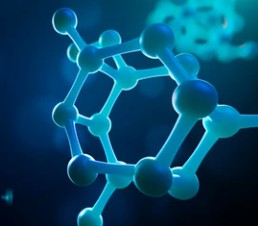As the most promising group of potential drug targets, the study of membrane protein antibodies is of great research and clinical significance. The research on membrane proteins has been slow due to the maintenance of their natural conformation and the amount of expression, which has led to even slower progress in the study of membrane protein antibodies. Effective membrane protein solubilization and membrane protein reconstitution methods can increase the amount of membrane protein obtained while allowing membrane proteins to maintain their natural conformation in vitro. Creative Biolabs has a state-of-the-art membrane protein research platform that can provide you with the ability to target membrane proteins for antibody production using polymers.

Since detergent stabilization techniques, liposome stabilization techniques, and nanodisc stabilization techniques use detergents to varying degrees, the nature and concentration of detergents may cause loss of activity of membrane proteins along with many limitations. Therefore, scientists have developed a new method without adding detergents at all from the idea of protecting the local lipid environment around membrane proteins. Namely, polymers including styrene-maleic acid, diisobutylene maleic acid, and polymethacrylate are used to stabilize the membrane proteins.
SMA is a copolymer with excellent properties obtained by free radical polymerization of styrene and maleic anhydride. SMA and about 140 lipids form SMA lipid particles (SMALPs).
The SMA method has been successfully applied to stabilize and purify ion channel proteins, transporter proteins, enzymes, respiratory chain complexes, and receptors. It has been shown that SMA is the most effective method for the isolation and purification of membrane proteins when the ratio of styrene to maleic acid is 2:1 or 3:1. In addition, the extraction efficiency of SMA is affected by the size of the target protein and the packing density of the protein in the membrane. Compared with methods such as detergents and liposomes, the advantage of SMA is its extraction of target proteins together with natural lipid bilayers and related proteins through the spontaneous assembly of SMALPs. This provides information on the interaction of the protein of interest with the target protein. In addition, this provides a way to identify the endogenous lipid composition around the target protein. However, the SMA method also has disadvantages. The intolerance of SMA to low pH and divalent cations limits the application of this method in downstream studies of membrane proteins.
The low tolerance of SMA to divalent cations limits the use of cations such as Mg2+ and Ca2+, which are commonly used in buffers for protein purification and activity assays. Diisobutylene maleic acid (DIBMA) copolymers can overcome this limitation by directly solubilizing membranes to form DIBMA lipid particles (DIBMALPs). The advantage of DIBMA is its higher tolerance to divalent cations. And the disadvantage of DIBMA is that the extraction purity and stability of some membrane proteins are lower than that of SMA.
Creative Biolabs would like to share with you the key points and experiences in membrane protein production to facilitate the smooth running of your project.
All listed services and products are For Research Use Only. Do Not use in any diagnostic or therapeutic applications.